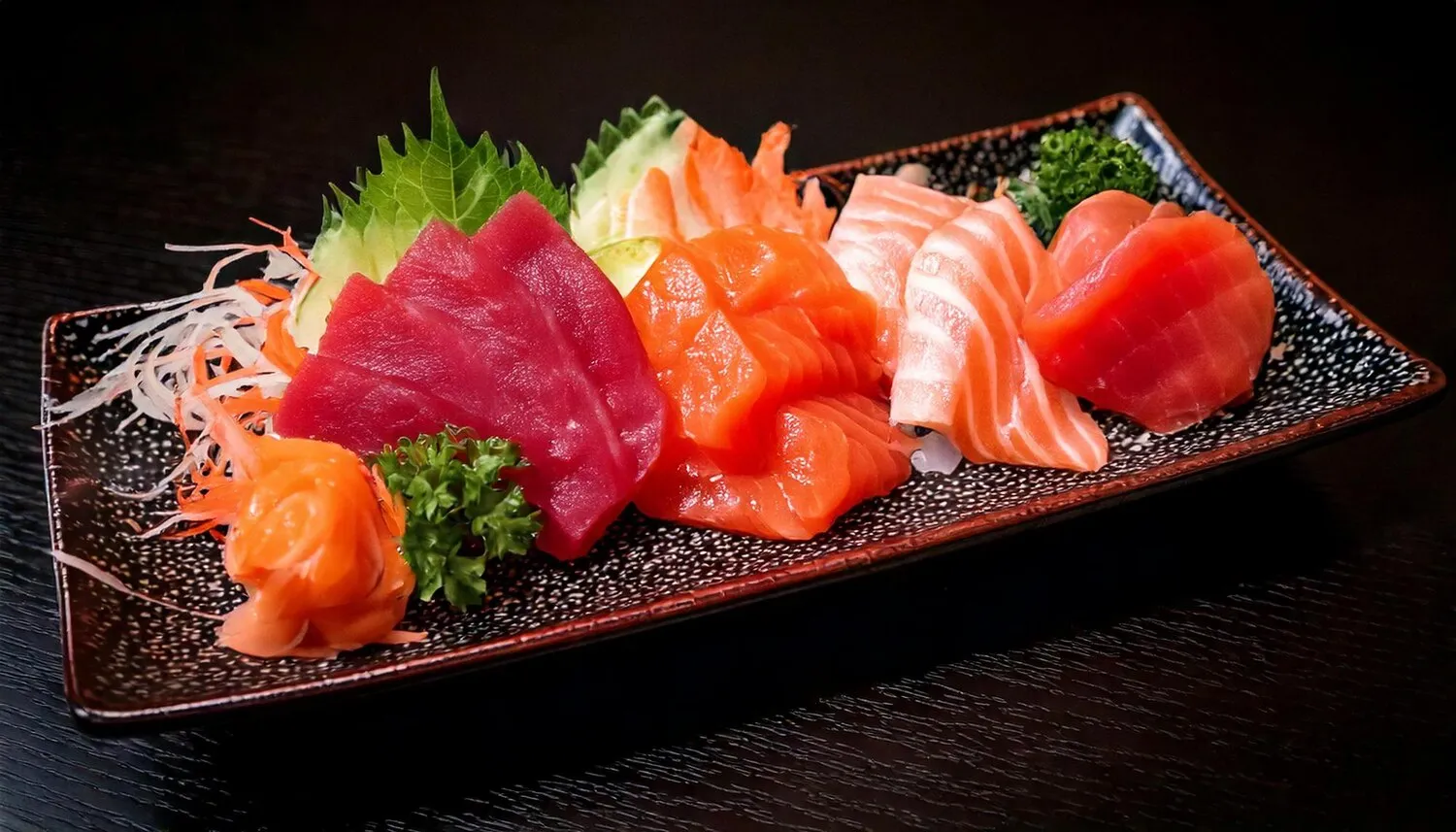
Sashimi
Thinly sliced raw fish.
Nutrition Facts
* The % Daily Value (DV) tells you how much a nutrient in a serving of food contributes to a daily diet. 2,000 calories a day is used for general nutrition advice.
The origins of sashimi can be traced back to the Muromachi period (1336–1573) in Japan. Before refrigeration, preserving fish was a challenge. Sashimi developed as a way to enjoy the freshest possible seafood, often using techniques like ike jime (a specific method of fish slaughter) to maintain quality. It was originally a dish enjoyed by the upper classes.
Sashimi is deeply embedded in Japanese culinary culture and is considered a sophisticated and refined dish, often associated with special occasions and celebrations.
Presentation Matters
The presentation of sashimi is just as important as the taste. Great care is taken in the arrangement of the fish, garnishes, and serving dishes to create a visually appealing and harmonious presentation.
Respect for Ingredients
Sashimi reflects a deep respect for the ingredients and a commitment to showcasing their natural flavors. The minimal preparation allows the quality of the fish to shine through.
Seasonal Delicacy
Certain types of sashimi are associated with specific seasons. For example, winter is often considered the best time for fatty tuna (otoro) due to its higher fat content.
Ikejime Method
The preservation of taste, and texture also includes consideration of the fish's welfare. It is common for high-end restaurants to use Ikejime methods, which aims to keep fish relaxed and keep their flesh in better conditions.
Sashimi offers a clean, delicate, and nuanced flavor profile that highlights the natural taste of the fish.
The primary flavor is the pure, unadulterated taste of the fish itself. Different types of fish offer varying textures and subtle flavors, from the buttery richness of tuna (maguro) to the clean, slightly sweet taste of sea bream (tai). The wasabi provides a sharp, pungent contrast, while the soy sauce adds saltiness and umami. The accompanying garnishes, like daikon radish, offer a refreshing and palate-cleansing element.
Wasabi Etiquette
Avoid dissolving wasabi directly into the soy sauce. Instead, place a small amount of wasabi on the fish itself to control the intensity of the flavor.
Soy Sauce Sparingly
Dip the fish lightly into the soy sauce. Over-soaking can mask the delicate flavor of the fish.
Start with Lighter Flavors
Begin with the milder-flavored fish and progress to the richer, more flavorful types. This allows you to appreciate the nuances of each variety.
Freshness is Key
Always ensure the sashimi is from a reputable source known for its commitment to freshness and quality. Ask your server for recommendations if you are unsure.
Explore additional Sushi dishes and restaurants
Explore SushiDiscover top dining spots and culinary experiences in Porto Alegre.
Explore Porto AlegreLearn more about the food culture, restaurant scene, and culinary heritage of Brazil.
Explore Brazil